Get your reading stack prepped and ready for the new year.
Many lists of design thinking books tend to tout the same titles, including Alan Cooper’s About Face, Steve Krug’s Don’t Make Me Think, and Don Norman’s The Design of Everyday Things. Those books are all essential reads, but there are plenty of other design books published every year that deserve attention as well.
The goal of this list is to highlight some lesser-known titles, mostly from the last year or two, that are well worth your time. The books recommended here cover topics including the psychology of design, inclusive design, and UX writing, and will all prove valuable in developing your understanding of and thinking about design.
Here are the books we’ll discuss:
- Designing Experiences by J. Robert Rossman and Mathew D. Duerden
- Mismatch: How Inclusion Shapes Design by Kat Holmes
- Inclusive Design for a Digital World: Designing with Accessibility in Mind by Regine Gilbert
- Writing is Designing: Words and the User Experience by Michael J. Metts and Andy Welfle
- Microcopy: The Complete Guide by Kinnerest Yifrah
- 100 Things Every Designer Needs to Know About People by Susan M. Weinschenk
- Hooked: How to Build Habit-Forming Products by Nir Eyal
- User Friendly by Cliff Kuang and Robert Fabricant
- Ruined by Design by Mike Monteiro
Let’s dive in!
1. Designing Experiences by J. Robert Rossman and Mathew D. Duerden
Designing Experiences is a great book for students and beginning UX designers—and anyone else who has a stake in creating experiences people will love.
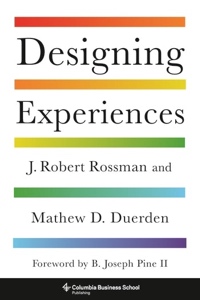
Co-authors J. Robert Rossman and Mathew Duerden are professors and take a smart but practical approach to their topic, which enables them to outline various theories and methods for designing experiences and explain how this information can be put into action on your next project.
Perhaps most usefully, the book provides a framework of five different types of experiences from “prosaic” to “transformational” that will give you a whole new perspective on what you design.
2. Mismatch: How Inclusion Shapes Design by Kat Holmes
While UX and UI designers have made nods to creating accessible, inclusive design for years, this has rarely been as active a consideration as it should be. Yet, as the world becomes increasingly dependent on digital technology, the necessity to understand and accommodate the needs of everyone is more important than ever.
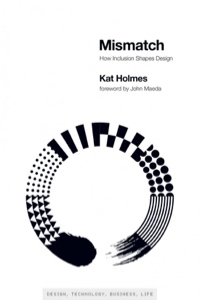
In Mismatch, designer Kat Holmes argues that inclusive design shouldn’t be an afterthought but the norm when approaching the design of new products. Not only will this create experiences that work well for everyone, it will also lead to innovative solutions that result in more creative products. This book will open designers’ eyes to how they may inadvertently exclude people with the products they create, and how they can remedy the situation by expanding the ways they think about their users.
3. Inclusive Design for a Digital World: Designing With Accessibility in Mind by Regine Gilbert
Even if you want to ensure your designs are inclusive, there are many things that need to be considered. In Inclusive Design for a Digital World, UX designer and professor Regine Gilbert casts a wide net to discuss all the different kinds of accessibility issues people may encounter when using a digital product.
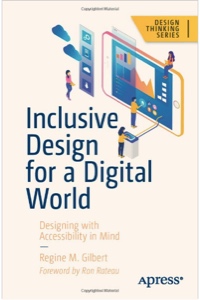
From visual impairment to limited motor skills, Gilbert discusses the different challenges users may be facing, and provides solutions and best practices to ensure your design can accommodate them and therefore be usable for all your users.
The book also discusses web compliance guidelines for various countries and even briefly explores inclusive design for newer technologies, like AR and VR. This guide offers practical solutions that you will want to implement in your next project.
4. Writing is Designing: Words and the User Experience by Michael J. Metts and Andy Welfle
In the past few years, more and more jobs with the title UX Writer have been created. This speaks to the reality that words are as important to the user experience as decisions about what design elements go where. However, many UX teams still overlook how the words used in their designs help shape the user experience.
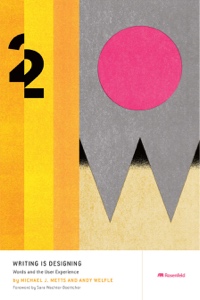
With Writing is Designing, UX writers Michael Metts and Andy Welfle aim to change that perception. They argue that words should be given the same deep consideration as other aspects of a product’s user experience and that writing should go through similar steps, from strategy and development to user research to building a product’s voice and tone.
The book also includes a chapter on inclusivity, which discusses the need to consider the way words may impact accessibility, including the use of pronouns and acknowledging users’ various identities.
5. Microcopy: The Complete Guide by Kinnerest Yifrah
Israeli UX writer Kinnerest Yifrah’s handbook Microcopy is considered the gold standard of UX writing. The recently released second edition covers the essentials of UX writing, including establishing the voice and tone for your project, writing everything from error messages to buttons and how writing can be used to guide users through tasks.
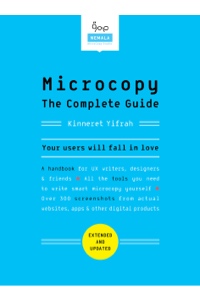
The book is full of examples and also includes guidelines, checklists and step-by-step instructions to ensure you can write successful copy for every part of the user experience. This is a book that UX writers and anyone else writing microcopy for digital products will reference again and again.
6. 100 Things Every Designer Needs to Know About People by Susan M. Weinschenk
If you design for people, it’s essential you understand psychology, and design psychologist Susan Weinschenk has spent years explaining how psychology impacts the way users interact with design. 100 Things Every Designer Needs to Know About People has been an essential read since it initially came out in 2011 and was recently updated this year with a second edition.
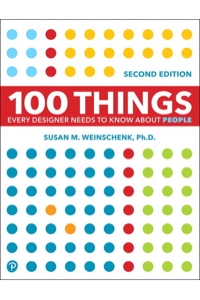
The book lays out 100 facts about people’s perceptions, memories, motivations, attention, emotions, and thought-processes that are useful for designers to keep in mind as they create their products. Each fact is laid out individually over a few pages making it easy to reference the information that’s most relevant to the design problem you’re currently working on.
7. Hooked: How to Build Habit-Forming Products by Nir Eyal
Hooked uses consumer psychology to explain why some digital products are so engaging they become habit forming, while others never capture users’ attention. Author Nir Eyal has years of experience as researcher, consultant and start-up founder and he’s distilled what he’s learned about user engagement into this book.

The book includes case studies and examples from real products, including the iPhone, Facebook and Twitter, and lays out a model for how customers can be subtly encouraged to come back to a product again and again. Anyone designing apps or other products that rely on long-term user engagement will want to read this book.
8. User Friendly by Cliff Kuang and Robert Fabricant
User Friendly is a fascinating book that presents UX design from a unique angle: the history of design and rise of user-friendly products. Designers and co-authors Cliff Kuang and Robert Fabricant explain how design shapes us as individuals and as a society while discussing the reasons UX design has become increasingly essential in a world where poorly designed products can result in terrible errors.
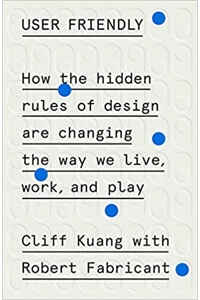
The authors combine detailed research and reporting with their practical experience in the field, leading to a book that will make you look at UX design—and the world around you—in a different way.
9. Ruined by Design by Mike Monteiro
If you’re a designer, there’s a high likelihood Ruined by Design will make you angry. Designer and author Mike Monteiro is going for the jugular with his observations, but he’s also pointing out something essential designers should consider in their work: that everything designers create has the power to shape human behavior. That means design can bring out the best in us, but it can also bring out the worst. And in a world where bullying, conspiracy theories and hate proliferate online, this is something designers must pay attention to in order to ensure their designs don’t add to the problem.

This book explores the ethics of what designers do and observes that designers are responsible for considering the ways what they create impacts the world.
Discovering even more design books
There are many other amazing design books out there on any topic you can think of. If this list didn’t cover something you’re interested in, a little research will likely point to something that will suit your needs.
If you found this article valuable, you’ll find the following useful as well:
